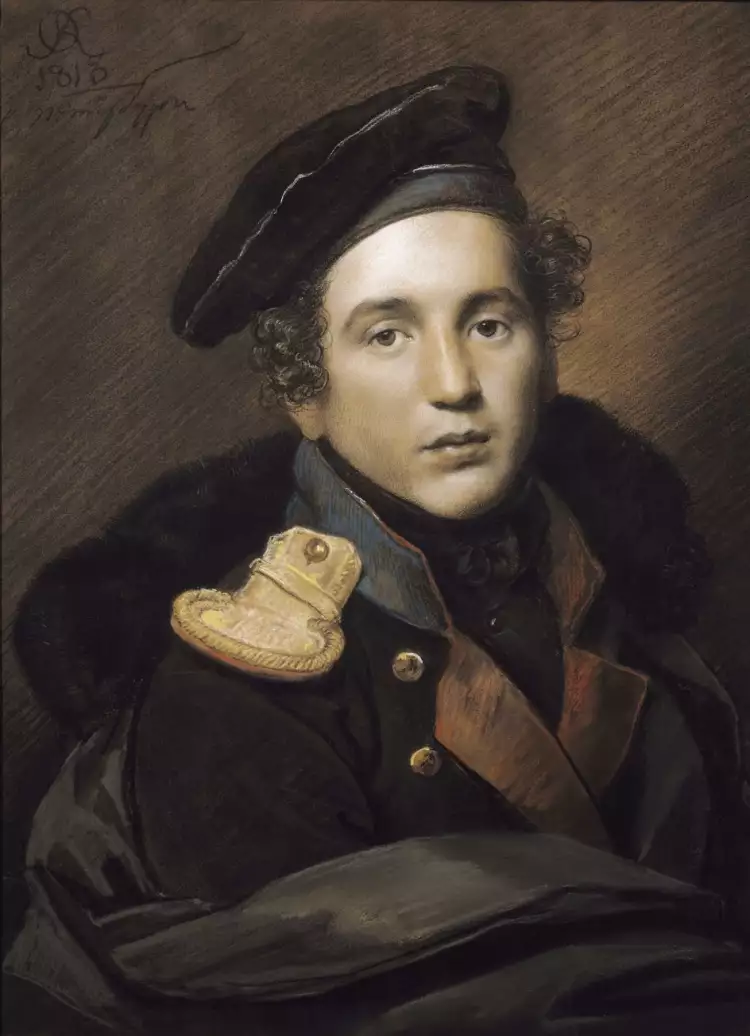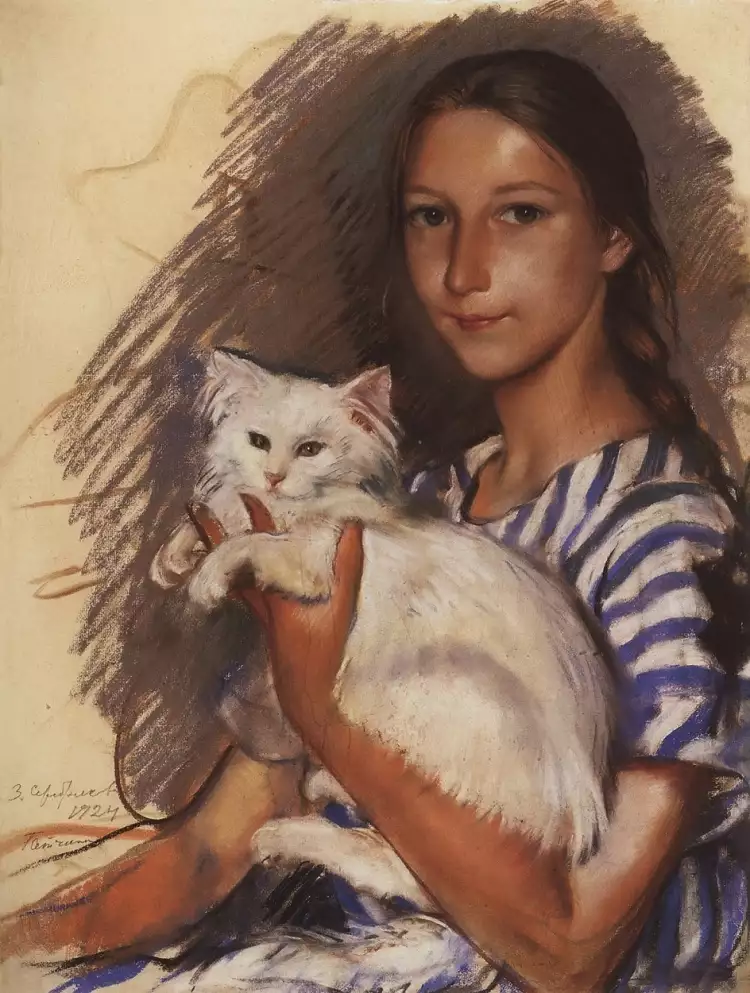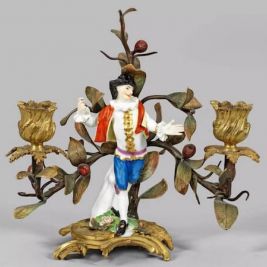
Pastel - a technique with unique possibilities in painting and graphics: types, history, artists
Pastel is a graphic and painting technique in which colored sticks or pencils without a frame are used to create works of art. Pastel is also the name for artistic materials of different shades in the form of thin blocks with a rounded or rectangular cross-section. The general name of the technique and materials comes from the Latin word "pasta," which means "paste."
 Pastel. Jean-Étienne Liotard. The Chocolate Girl, 1744
Pastel. Jean-Étienne Liotard. The Chocolate Girl, 1744
Pastel is a unique technique of visual art. It is related to graphics through the use of lines and hatching in the process of painting, and with painting through the variety of expressive possibilities.
 Pastel. Alexey Venetsianov. Peasant girl with a sickle in the rye, 1820
Pastel. Alexey Venetsianov. Peasant girl with a sickle in the rye, 1820
Types of pastel
Most types of pastel are made by pressing. The basis for its production is coloring pigment and a binding agent. Depending on the chemical composition and properties, there are four main types of pastel:
- Dry pastel. It contains no other ingredients besides the pigment and binding agents. It applies easily to paper, allows for mixing different colors to achieve various shades. This material can be easily mixed with other types of paints and is highly resistant to the effects of sunlight. However, the image is quite fragile. To prevent the shedding of tiny pigment particles, the painting is placed behind special non-reflective glass in a frame or covered with a special fixative.
- Oil pastel. It contains natural linseed oil in addition. This material feels greasy to the touch. It can be smudged with a special solvent, and the applied drawing does not require additional fixation. Oil pastels are almost not smudged, and their different colors do not mix well.
- Wax pastel. In its production, natural or synthetic wax is added to the sticks. Such pastels do not dirty the hands, and they are often used by children for drawing, while professional artists rarely use them. Book illustrators enjoy working with this material, as the finished drawing adheres well to paper, and the colors in the picture are very bright and saturated.
- Watercolor pastel. It differs chemically from wax pastel by the presence of special water-soluble components. The drawing created with it can be blurred with water to achieve a very realistic watercolor image with subtle color transitions and an airy effect.
 Pastel. Valentin Serov. A woman with a horse, 1899
Pastel. Valentin Serov. A woman with a horse, 1899
Dry pastel is further divided into several subtypes:
- Hard pastel. It contains the maximum amount of binding agent and the minimum ratio of coloring pigment. It is usually produced by manufacturers in the form of rectangular sticks (for outlining and basic lines) or special pastel pencil leads (for drawing fine details).
- Soft pastel. It contains more coloring pigment. It requires extreme caution when used, as the sticks break easily when pressed hard. It is often sold in the form of round sticks. Soft pastel is excellent for blending images.
- Ultra-soft pastel. It contains the minimum amount of binding agent and is available in small jars. Special sponge applicators are used for applying it to paper and blending colors.
- Professional painters and graphic artists use several sets of dry pastel simultaneously (hard, soft, and ultra-soft) when creating paintings. This approach significantly expands creative possibilities and allows for a variety of artistic styles.
 Pastel. Jean Baptiste Siméon Chardin. Self-portrait, 1771
Pastel. Jean Baptiste Siméon Chardin. Self-portrait, 1771
Professional painters and graphic artists often use multiple sets of dry pastels (hard, soft, and ultra-soft) simultaneously when creating their artworks. This approach significantly expands their creative possibilities and allows them to create a diverse range of artistic styles and techniques.
 Pastel. Maurice Quentin de La Tour. Self-portrait, 1750
Pastel. Maurice Quentin de La Tour. Self-portrait, 1750
Pastel drawing technique requires the artist to have good professional skills and handle the material with care. Nowadays, special paper or cardboard is used to create paintings, and canvas is used much less frequently. The artist outlines the basic lines and strokes with pastel sticks and uses their fingertips for blending, skillfully creating soft tonal transitions and elements of shading on the surface of the painting.
 Pastel. Orest Kiprensky. Portrait of Pyotr Olenin, 1813
Pastel. Orest Kiprensky. Portrait of Pyotr Olenin, 1813
History of Pastel
The history of pastel spans over 500 years. The credit for creating this technique goes to the French artist Jean Perréal. The court painter accompanied King Louis XII during military campaigns and made sketches of important events. It was Perréal, at the end of the 15th and the beginning of the 16th century, who invented pastel chalk based on dry coloring pigment and various types of acacia gum resin.
 Pastel. Jean-François Millet. A bouquet of daisies, 1866
Pastel. Jean-François Millet. A bouquet of daisies, 1866
By the end of the 16th century, this new artistic material gained popularity in France, and later in England and Italy. The best artists of that time started to create commissioned portraits using pastel.
 Pastel. Zinaida Serebriakova. Portrait of Natasha Lanceret with a cat, 1924
Pastel. Zinaida Serebriakova. Portrait of Natasha Lanceret with a cat, 1924
The peak of pastel painting's popularity in Europe came in the 18th century, during the Rococo style dominance in art. The ability to create the finest color transitions through this new technique contributed to its success. However, over time, oil painting gradually replaced pastel from wide usage.
 Pastel. Ilya Repin. Portrait of Alexandra Botkina, 1901
Pastel. Ilya Repin. Portrait of Alexandra Botkina, 1901
Interest in pastel was revived in the mid-19th century by Edgar Degas. The brilliant French Impressionist developed a new blending method. He treated pastel drawings with steam and then used his fingers or a brush to blend the strokes and lines. Degas's works made a sensation in the art world, but by the beginning of the 20th century, pastel technique had lost popularity once again.
 Pastel. Isaac Levitan. River valley, 1895
Pastel. Isaac Levitan. River valley, 1895
Despite the emergence of new pastel paints in the following 100 years, only a few contemporary artists prefer to work extensively with this medium. However, the works of ancient masters continue to captivate art enthusiasts.
 Pastel. Rosalba Carriera. Felicità Sartori in Turkish costume, 1741
Pastel. Rosalba Carriera. Felicità Sartori in Turkish costume, 1741
Famous Artists Who Worked in Pastel
Many well-known artists used pastel paints to create their artworks. Some of them remained loyal to this technique throughout their lives, while others devoted only a small portion of their time to it but gained widespread recognition. Among them are:
- Rosalba Carriera. An outstanding Italian artist who created delicate portraits of the nobility in the Rococo style and achieved tremendous success with the Parisian public.
- Gustaf Lundberg. The greatest artist of 18th-century Sweden painted numerous grand pastel portraits and amassed a substantial fortune during his lifetime.
- Jean-Étienne Liotard. A Swiss master of painting and the author of the famous "Chocolate Girl," he was the most fashionable portraitist in France in the mid-18th century.
- Edgar Degas. The great Impressionist artist appreciated the airy quality of pastels and learned to elegantly capture the fleeting movements of his subjects in his paintings. His "Blue Dancers" are filled with subtle color combinations and rich textures.
- Isaac Levitan. The brilliant Russian landscape master created several enchanting pastel masterpieces between 1890 and 1895.
 Pastel. Edgar Degas. Blue Dancers, 1887
Pastel. Edgar Degas. Blue Dancers, 1887
 Pastel. Eugène Delacroix. A Negro in a turban, 1826
Pastel. Eugène Delacroix. A Negro in a turban, 1826
The Very Important Lot portal offers a unique opportunity for anyone to participate in art auctions and purchase works of art online. The website also allows you to buy paintings directly from contemporary artists without intermediaries.
 A colourful farmer Thomas Baumgartner
A colourful farmer Thomas Baumgartner  Glamour in photography is a beautiful genre with elements of elegance and luxury
Glamour in photography is a beautiful genre with elements of elegance and luxury  Schloss Ahlden: 190. Internationale Kunstauktion - Teil III
Schloss Ahlden: 190. Internationale Kunstauktion - Teil III  Kuznetsov porcelain
Kuznetsov porcelain  Michelangelo - the greatest sculptor in the world: biography and works of the Italian artis
Michelangelo - the greatest sculptor in the world: biography and works of the Italian artis  Jewelry craftsmanship - an ancient art of creating unique masterpieces from precious materials
Jewelry craftsmanship - an ancient art of creating unique masterpieces from precious materials  Acrylic is a painting technique and a type of artistic paint: essence, history, advantages, application
Acrylic is a painting technique and a type of artistic paint: essence, history, advantages, application  Gothic - the mystical art of the Middle Ages
Gothic - the mystical art of the Middle Ages  Naturalism in Painting: Naturalness and Photographic Accuracy of Reality
Naturalism in Painting: Naturalness and Photographic Accuracy of Reality  Installation - the modern art of striking three-dimensional compositions
Installation - the modern art of striking three-dimensional compositions